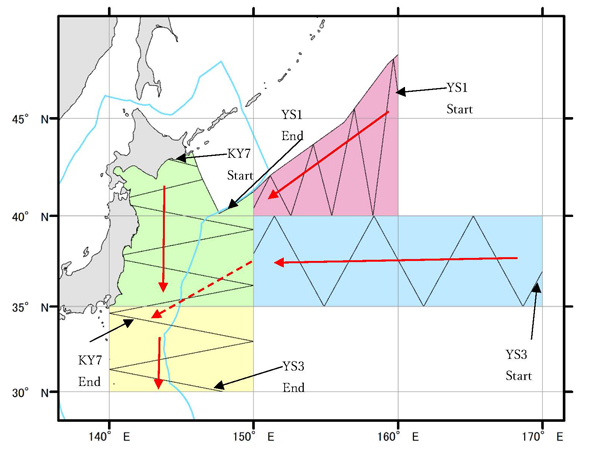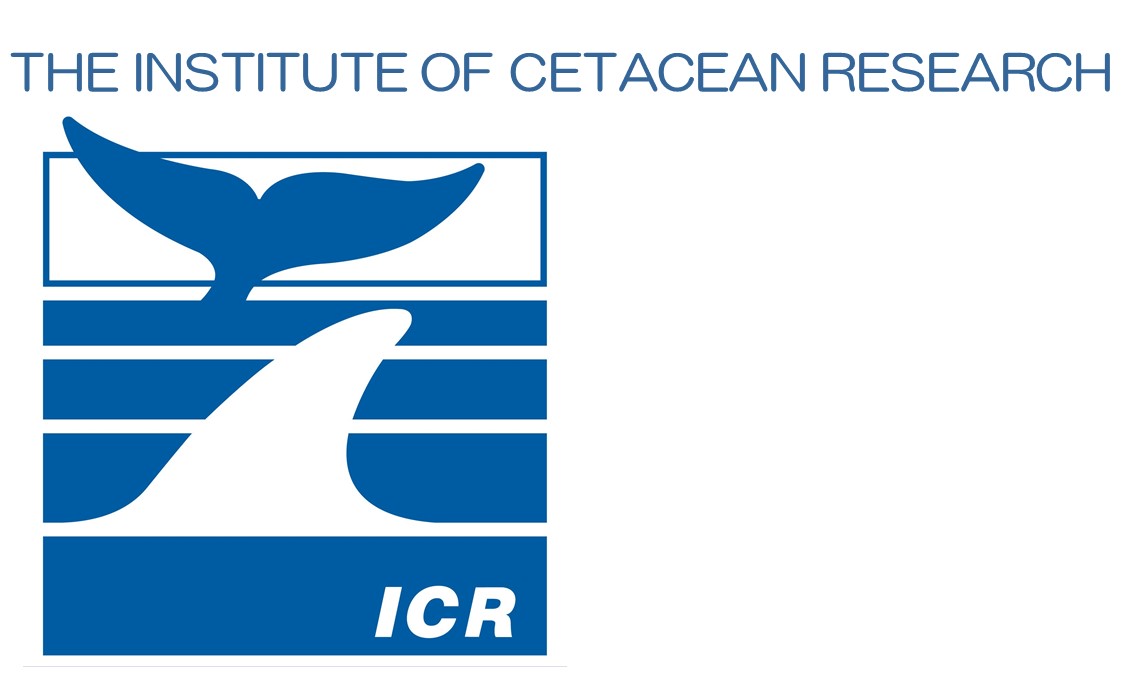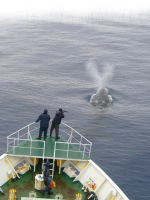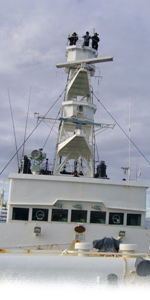2020 Dedicated Cetacean Sighting Survey in the western North Pacific
- Research vessels return to port
September 24, 2020
Designated Corporation for Scientific Whale Research
THE INSTITUTE OF CETACEAN RESEARCH
1. Background
The Institute of Cetacean Research (ICR) conducted a set of dedicated cetacean sighting surveys in the western North Pacific during the 2020 summer season (August-September). With the resumption of commercial whaling for large whales on July 1, 2019, it has become even more important to recognize the status of whale stocks in the western North Pacific. This year, six ICR researchers were onboard of three research vessels to conduct simultaneous sighting surveys in a wide area of the western North Pacific, including the coastal area of Japan, with the main objective of estimating the abundance of sei, Bryde's and common minke whales. This is the first of such large-scale survey since 2008. Furthermore, the surveys also collected sighting and other information from fin, humpback, as well as other large whales, including the rare western North Pacific blue and right whales.
2. Survey outline
The Yushi-Maru and Yushin Maru No. 3 left Ishinomaki Port on July 31 and returned to Ishinomaki Port on September 24. The Kaiyo-Maru No.7 left Hachinohe Port on August 5 and returned to Kurihama Port on September 18. Non-lethal research methods such as sighting surveys for abundance estimates, photo-id1, skin biopsy sampling, and satellite tagging2 for studies on distribution, movement and stock structure were employed by the three research vessels.
The survey was originally planned to be conducted in a range of areas of the western North Pacific Ocean north of 35°N and from the coast of Japan to 170°E. However, due to favorable weather conditions, the survey progressed earlier than planned, and we conducted an additional survey in the area between 140° and 150°E and between 30° and 35°N (area shown in yellow in Figure 1).

Figure 1. The research area for the 2020 Dedicated Cetacean Sighting Survey in the western North Pacific. The Yushin-Maru (YS1) surveyed the area between 150° and 160°E and between 40° and 48°N (pink area). The Yushin-Maru No. 3 (YS3) surveyed the area between 150° and170°E and between 35° and 40°N (blue area) and the area between 140-150°E and between 30-35°N (yellow area), and the Kaiyo-Maru No. 7 (KY7) survey the area between 140° and 150°E and between 35° and 43°N (green area). The red arrows indicate the direction of the survey and the dotted red arrow indicates the movement of YS3. The light blue line represents Japan's EEZ line.
3. Survey organization
3.1 Operating body
The Institute of Cetacean Research
3.2 Research vessels and crews
Dedicated sighting vessel Yushin-Maru (724 ton, Captain Hidenori Kasai, 16 crewmen)
Dedicated sighting vessel Yushin-Maru No. 3 (742 ton, Captain Chikamasa Okoshi, 16 crewmen)
Dedicated sighting vessel Kaiyo-Maru No. 7 (649 ton, Captain Yasuaki Sasaki, 20 crewmen)
3.3 Researchers
Takashi Yoshida (Institute of Cetacean Research)
Tatsuya Isoda (Institute of Cetacean Research)
Megumi Takahashi (Institute of Cetacean Research)
And other 3 researchers
4. Main results
Sighting survey
By searching a total distance of 7,073 nautical miles (approximately 13,100 km), we collected information on six baleen whale species, including blue and fin whales, and two toothed whale species, namely sperm and killer whales. The species with the highest number of sightings was Bryde's whale (320 groups, 418 animals), followed by sperm whale (237 groups, 598 individuals), sei whale (61 groups, 74 animals), fin whale (58 groups, 77 animals), killer whale (6 groups, 42 animals), blue whale (4 groups, 4 animals), minke whale (2 groups, 2 animals), and humpback whale (2 groups, 2 animals).
Other Non-lethal researches
Photo-id were taken for blue whale (4 individuals), humpback whale (2 individuals) and killer whale (4 individuals). Biopsy samples were collected from 2 blue whales, 12 fin whales, 15 sei whales, and 2 humpback whales. For satellite tagging experiments, 6 fin whales and 11 sei whales were attached with satellite tags.
Summary
The data and specimens obtained from this survey will be analyzed through joint research with domestic and overseas research organizations and will be utilized for the estimation of whale abundance in the western North Pacific and are expected to contribute to the advancement of research on whale stocks such as the elucidation of stock structure. Details of the research results will be presented at the IWC/SC and other relevant international meetings from next year onward.
Notes:
1 Photographs that record the external characteristics (coloration patterns, shape of fins, scars, etc.) that make possible to identify individual whales.
2 This is a method of collecting a piece of skin samples of whales for DNA analysis, etc.
2020 Dedicated Cetacean Sighting Survey in the western North Pacific - Research vessels return to port (PDF file)




